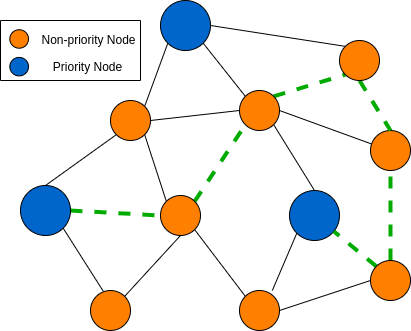Priority Patrolling
The project revolves around the essential task of patrolling, involving systematic visits to specific locations in an environment for surveillance and monitoring. Patrolling, whether conducted by static surveillance methods like CCTV or robots equipped with sensors, acts as a deterrent to anomalous activities and contributes to enhanced safety and cost-effectiveness. Notably, the global market for inspection robots is projected to reach substantial figures, emphasizing the growing importance of such systems.
Recognizing the efficiency and resilience of multi-robot systems in tackling cumbersome tasks, the project focuses on developing algorithms for these systems. Multi-robot systems typically involve low-cost robots with limited sensing and computing capabilities, making efficient resource utilization crucial. The project addresses the NP-hard nature of the multi-agent patrolling problem, specifically concentrating on priority patrolling where certain locations hold absolute priority.
The algorithm proposed in the project aims to optimize patrolling routes, emphasizing frequent coverage of non-priority locations while prioritizing key areas. This is particularly relevant in scenarios where knowledge of patrolling routes needs to be safeguarded, as in security and surveillance applications. The algorithm is tailored for practical implementation on robots with limited capabilities, utilizing a parameter based on the robot’s memory for walk generation. This innovative approach reduces computational and memory requirements, enhancing the feasibility of implementation. The project’s objective is to contribute to the field of multi-agent priority patrolling, addressing the practical challenges associated with limited resources and real-world applications.
Check out our paper.
